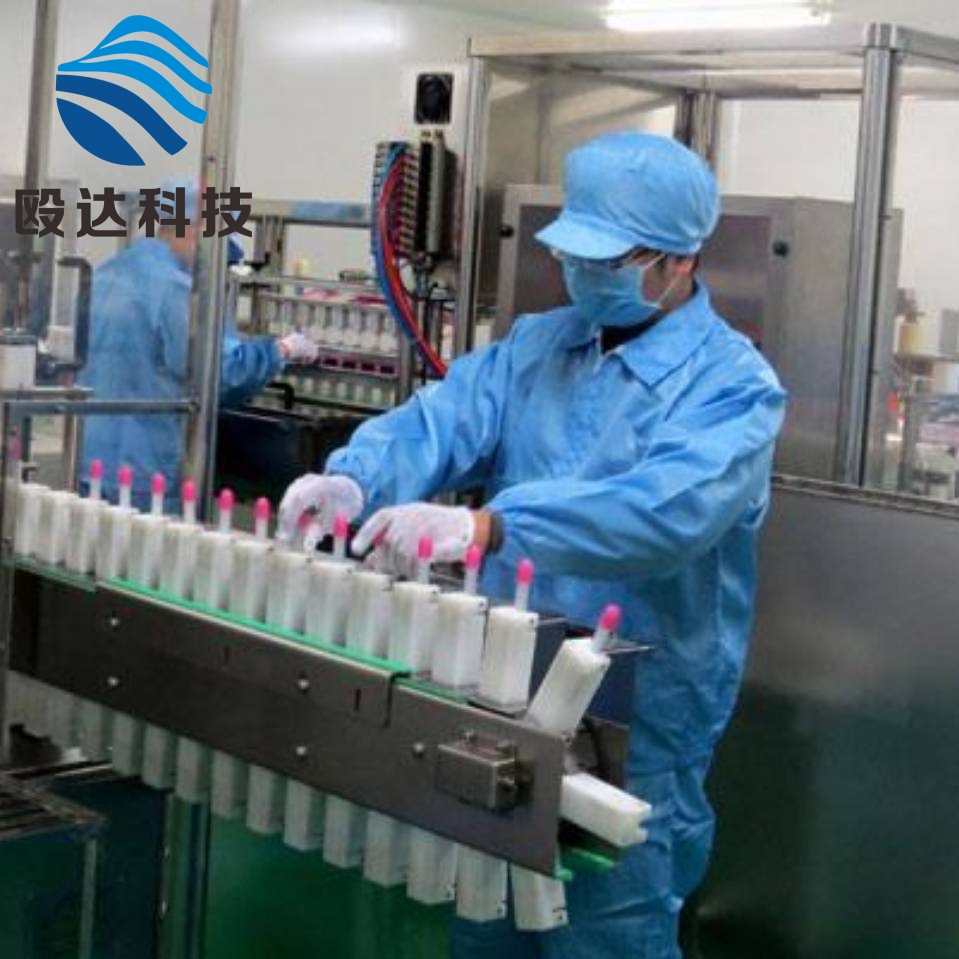-
Categories
-
Pharmaceutical Intermediates
-
Active Pharmaceutical Ingredients
-
Food Additives
- Industrial Coatings
- Agrochemicals
- Dyes and Pigments
- Surfactant
- Flavors and Fragrances
- Chemical Reagents
- Catalyst and Auxiliary
- Natural Products
- Inorganic Chemistry
-
Organic Chemistry
-
Biochemical Engineering
- Analytical Chemistry
- Cosmetic Ingredient
-
Pharmaceutical Intermediates
Promotion
ECHEMI Mall
Wholesale
Weekly Price
Exhibition
News
-
Trade Service
On December 30, 2019, a 49-year-old male patient with right calf osteophrine syndrome due to acute carbon monoxide poisoning was admitted, who had a 10-year history of chronic nephritis and began dialysis treatment for renal failure a month ago, and was admitted to the hospital with osteophrine syndrome.
was admitted to hospital for 2 weeks and was admitted to a new coronavirus pneumonia, referred to as "new coronary pneumonia", caused by the 2019 new coronavirus (2019-nCoV) infection, and was transferred to an isolation ward, where he was given anti-infective, antiviral, phlegm, detoxifying, bedside mobile dialysis machine side dialysis and system-side nutrition, and support treatment for the disease.
After 2 weeks of treatment, the patient recovered well, mental state can, no fever, cough, wheezing and other discomfort, appetite can be;
case is rare, severe symptoms, difficult to diagnose and treat, is currently reported as the first case of orthopaedic surgery and a new coronary pneumonia case.
December 2019, Wuhan City, Hubei Province, has found a number of cases of new coronavirus pneumonia caused by the 2019 new coronavirus (2019-nCoV) infection, referred to as "new coronary pneumonia."
Concord Hospital, affiliated with Tongji Medical College, Huazhong University of Science and Technology, received a patient with osteofihragm syndrome caused by carbon monoxide poisoning on December 30, 2019, who recovered well after treatment with a new coronary pneumonia.
report is as follows.
cases were introduced to the patient male, 49 years old.
was admitted to hospital with "1d swelling of his lower right limb".
admission examination: the patient's mentality is clear, vital signs are stable, acute disease appearance, right calf swelling is obvious, significantly thicker than the left side, higher skin tension.
1d ago due to gas leakage caused confusion, in the local hospital, diagnosed with acute carbon monoxide poisoning, after infusion, dehydration, nutrition of brain nerves and high flow oxygen treatment treatment, the patient's whole body symptoms significantly alleviated, but the swelling of the right calf continued to worsen, then transferred to Huahua University of Science and Technology Tongji Medical College affiliated Concord Hospital for further treatment.
history of chronic nephritis: 10 years of chronic nephritis, no history of hepatitis, tuberculosis and other infectious diseases;
after admission to the hospital specialist medical examination: low right calf skin temperature, feeling decreased, swelling is obvious, high contact tension, ankles, toes are flexing state, muscle strength 1 to 2 levels, foot artery throbbing weak.
chest X-ray showed clear double lung field, no obvious substantial lesions.
biochemical examination: serum creatine kinase 8450U/L, lactic acid dehydrogenase 3580U/L, creatine kinase isoenzyme MB1001.2ng/L, all significantly increased;
emergency B super shows the lower and middle sections of the right thigh, the calf muscle layer thickens, the echo enhances, the muscle texture is blurred.
the patient's medical history, symptoms, signs and auxiliary examination results, diagnosed as right calf bone fascia chamber syndrome, carbon monoxide poisoning.
diagnosis was clear, the emergency department's osteo fascia chamber was cut to reduce stress.
surgery in the right calf inside and outside, respectively, for vertical incision, length of about 20cm, to see the bone fascia indoor tension is higher, of which the phosphid muscle, biliary edema is serious, gray-red, electrical stimulation after a slight contraction;
complete decompression, the closed negative pressure lead (VSD) dressing covers the wound surface.
after surgery to strengthen anti-inflammatory, anti-swelling pain relief, nutrition brain nerve, mask high flow of continuous absorption of pure oxygen and disease support treatment.
2 weeks after surgery, the swelling of the limb gradually decreased, feeling, movement function significantly restored, muscle strength restored to level 3;
2 weeks after admission, patients appear fever, cough, chest tightness, wheezing, to afternoon fever, body temperature does not exceed 38.5 degrees C, accompanied by coughing, coughing sputum, sputum less.
1 week after the deterioration of the disease, lung CT examination shows: double lung multiple plaque-like solid shadow and grinding glass shadow, the upper leaf is even, along the bronchal distribution, partly located under the pleural membrane;
biochemical examination showed: white blood cells 11.8 x 109/L, increased; lymphocytes 0.7 x 109/L, lymphocytes percentage 5.9%, significantly decreased; Infections with pathogens (pneumonia mycogens, pneumococcal chromosuits, pneumo-obsessed Legionella serum type 1, adenovirus, Q-derrick secondary, respiratory cytovirus, influenza virus A, influenza virus B and sub-influenza virus 1, 2, 3) IgM testing were negative.
tested positive for PCR nucleic acid in the new crown pneumonia and was confirmed by the expert group as the new crown pneumonia.
The patient was then transferred to the isolation ward of Concord Wuhan Red Cross Hospital for treatment, giving anti-infective (Moxisa star needles and cephalosporine needles), antiviral (Abidor, more xiloviral needles, etc.), phlegm (ampicillin), anti-heat detoxification (Hi Yanping injection), bedside mobile dialysis machine side dialysis and its whole body nutrition, support treatment for the disease.
After 2 weeks of treatment, the patient recovered well, mental state can be, no fever, cough, wheezing and other discomfort, appetite, dry wound, no obvious oozing, right lower limb and right foot feeling, motor function gradually restored (muscle strength level 4).
Discussion of osteophhragmal chamber syndrome refers to a series of early symptoms caused by acute ischemia and hypoxia of muscles and nerves in the osteophhragm room, which is a common clinical emergency, mostly in the forearms and calves.
causes of osteocymbaric fascia syndrome are classified as traumatic and non-traumatic, the former is rare, and the latter is clinically rare.
The key to its treatment is early detection, early diagnosis, early treatment, early and complete incision of fascia decompression is an effective way to treat osteosthragmal syndrome;
cut to reduce pressure to completely open the affected bone fascia chamber, lift indoor high pressure, block ischemic-edema-ischemic vicious cycle.
the decompression, blood circulation improved and a large number of necrotic tissues, secretions, metabolites and toxins entered the blood circulation, which can lead to complications such as shock, uneven heart rate and acute renal failure.
hemodialysis can remove toxins entering the blood circulation, remove metabolic waste from the body, correct metabolic disorders in the body, and improve kidney function.
addition, after surgery with moderate functional exercise, can promote the early recovery of limb function.
the main clinical manifestations of carbon monoxide poisoning are headache dizziness, weakness of limbs, nausea and vomiting and other symptoms, serious people can appear consciousness disorders, and even life-threatening.
For patients with carbon monoxide poisoning, the first doctor in the first aid at the same time, to focus on the patient's limbs feeling, motor function and end blood circulation, limb pain, swelling and other conditions, timely diagnosis and treatment of osteo fascia room syndrome.
The possible mechanisms for the occurrence of osteoblast syndrome in this patient: (1) carbon monoxide poisoning, resulting in the dissolution of the transverse muscles, increased pressure between the fascia, blocked circulation, resulting in indoor muscle and nerve ischemic, hypoxia; Muscle necrosis, long-term pressure on the right lower extremities will make muscle ischemia, swelling, so that the pressure in the fascia room increases, the formation of ischemic-edema vicious cycle, resulting in the occurrence and progression of osteoblast syndrome;
new coronary pneumonia clinically with fever, fatigue, dry cough as the main manifestations, a small number of patients with diarrhea symptoms.
detection of new coronavirus nucleic acids with real-time fluorescence quantitative PCR of lung CT and respiratory samples is the main auxiliary examination method of the disease.
There is no targeted and effective treatment for new coronary pneumonia, the basic treatment includes the treatment of the disease support, maintain the stability of the internal environment such as oxygen, water, electrolyte, antibiotics only effective against bacteria, ineffective on the virus, recommended to use antibiotics only when considering combining bacterial infections, antiviral treatment mainly includes alpha-interferon, lopidove/ litonavir and other antiviral drugs, there is currently no special antiviral drugs.
, oxygen therapy is also an important means, including nasal catheters, mask oxygen supply and high flow oxygen treatment through the nose and other measures.
current clinical reports, the prognosm is poor for the elderly and those with chronic underlying diseases.
Huang and others conducted clinical, imaging and pathogenic examinations on 59 suspected patients, 41 of whom were diagnosed with new coronary pneumonia, and further analysis found that 32% of patients had chronic underlying diseases and that middle-aged and elderly patients with complications were more susceptible to 2019-nCoV.
At present, the spread of new crown pneumonia raging, the general public can not go out, closed environment carbon monoxide concentration increased, poisoning will be more serious, so should often open windows ventilation, to maintain indoor air circulation.
this case of patients in rare conditions, severe symptoms, difficult to diagnose and treat, is currently reported after the first case of orthopaedic surgery concurrent new coronary pneumonia, after active treatment has obtained better clinical efficacy.
Because the new coronary pneumonia is relatively contagious, in clinical work medical staff must do the following: (1) before the patient is admitted to hospital, must test body temperature, lung CT, blood routine (containing C-reactive protein), if necessary nucleic acid examination, screening for new coronary pneumonia; (2) Up to 1 family member is allowed to accompany, the family must also screen for new coronary pneumonia, (3) whether diagnosed or suspected patients must be treated equally, strictly abide by the disinfection isolation system, in the independent special isolation operating room surgery (reference to orthopaedic gas) Gangrene surgical procedures) ;(4) Surgical personnel must wear protective equipment in accordance with strict isolation requirements, in full protective conditions for patients to carry out surgery; (5) after surgery proper isolation of patients, according to the procedures for strict handling of surgical instruments and items, a comprehensive operation between the special surgery Killing; (6) For patients in the incubation period of the virus, once confirmed, should be transferred to the isolation ward immediately after surgery, the original ward needs to do a good job of disinfection isolation, all surgical personnel and close contacts must be isolated observation, and the new coronary pneumonia screening related examination.
.







